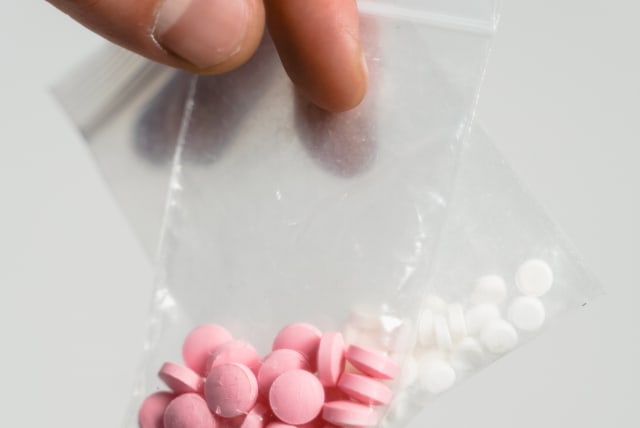Did MDMA change a neo-Nazi white supremacist's beliefs?

MDMA, also known as ecstasy, is a popular psychedelic and stimulant often used as an illegal party drug, but it also has potential for use in mental healthcare.
The widely illegal party drug ecstasy, also known as MDMA, seemingly cured a senior member of an infamous neo-Nazi white supremacist organization of his beliefs, giving him an entirely new outlook on the world, according to a BBC article adapted from Rachel Nuwer's book I Feel Love: MDMA and the Quest for Connection in a Fractured World.
This comes following a number of studies on MDMA and its effects on the human psyche and how it can be used as a means of treating mental health conditions such as anxiety and post-traumatic stress disorder (PTSD).
Ecstacy is currently illegal in most countries around the world but, aside from finding a niche as a party drug, it has also been a subject of considerable scientific interest due to its potential use in mental healthcare.
How did taking drugs change a white supremacist's worldview?
The full identity of the white supremacist in question hasn't been revealed, with the BBC article identifying him only as Brendan, a former leader of the US Midwest branch of Identity Evropa. This neo-Nazi group was founded in 2016 and had the explicit goal defined as the "Nazification of America," according to the Southern Poverty Law Center.
Most infamously, according to the Anti-Defamation League, it developed a slogan that has since grown beyond the group itself and has become a major calling card of the entire white supremacist movement all over the world: "You will not replace us." This slogan itself may be derived heavily from the antisemitic conspiracy known as Great Replacement Theory, though is also believed to have started as an attempt to mock/troll US actor and artist Shia LeBouf at a 2017 art installation.
However, in 2019, Identity Evropa, which would later rebrand as the American Identity Movement, suffered a major leak of its members' messages on the app Discord, which resulted in many of their identities being exposed in the press.
According to the BBC, Brendan was one such member whose identity was exposed, in his case courtesy of the Chicago Antifascist Action movement. This caused him to lose his job.
Eventually, Brendan seemed to have joined a double-blind scientific study led by University of Chicago Prof. Harriet de Wit. Eventually, she learned that Brendan's worldview and beliefs seemed to have changed as a result of this drug.
But MDMA's potential use in psychotherapy is nothing new.
What is the history of MDMA and its use in science?
Ecstacy was created by the German company Merck in 1912 as a means of controlling bleeding. However, it didn't see widespread use or research at the time.
By the 1970s and 1980s, some experts were already considering the drug's potential as a psychiatric treatment. However, at some point, MDMA began seeing use as a popular recreational drug. In 1985, the US Drug Enforcement Agency (DEA) banned MDMA as a Schedule I drug, meaning it has a high potential for abuse and no accepted medicinal value.
Eventually, though, enough interest in MDMA's potential saw it be allowed for use in certain scientific studies to test its effectiveness at mental health treatment.
The first of these was in the 1990s, when an unpublished study investigated if it could lessen symptoms of pain in terminally ill patients, according to the US National Institites of Health (NIH).
In an article published in Nature's journal Neuropsychopharmacology, de Wit cites a number of studies going as far back as 2010 describing how MDMA can be used to treat PTSD, anxiety associated with autism, social skill issues, and more.
In 2017, the US Food and Drug Administration (FDA) allowed MDMA to be tested as a PTSD treatment and doctors in the UK began testing it as a way of treating alcohol use disorder.
Research continued over the years. Then in 2023, the Multidisciplinary Association for Psychedelic Studies (MAPS) finished its phase III trials for using MDMA to treat PTSD.
According to the University of California, San Francisco Prof. Jennifer M. Mitchell, the way this works is that MDMA specifically impacts the brain's amygdala, which has to do with memory and fear.
Speaking to psychiatrist.com, Mitchell explained that MDMA can help untangle and deal with impactful and suppressed memories, as well as release oxytocin to improve empathy and self-compassion. This allows them to see their memories and past in a new light, which can help overcome the negativity associated with them.
However, there are issues with MDMA still. There isn't as much research yet on how it can affect the rest of the brain. The drug also comes with many side effects similar to those experienced on stimulants like Adderall - sweating, increased heart rate, and loss of appetite are among the milder options.
In the long term, MDMA also has immunosuppressive effects, making the brain more susceptible to diseases. It also has addictive or dependency-inducing qualities, which can result in significantly debilitating withdrawal symptoms. However, long-term use is also associated with high levels of tolerance, which can lead to accidental overdoses.
For this reason, many experts stress that MDMA use should be regulated and never used clinically without also seeing a therapist.
But that doesn't change the fact that MDMA is seen by many to have potential for clinical use at all, which only becomes more apparent the more scientists learn about them.
In a study recently published in the peer-reviewed academic journal Nature, researchers claim to have figured out just how MDMA impacts the brain: Essentially, it's the same way as other psychedelic drugs like ketamine, LSD, and psilocybin.
Further investigation of how these drugs work could not only pave the way for new medical treatments but can also recreate a phenomenon known as brain plasticity, also known as neuroplasticity. This ability can result in visible structural changes in the brain and can be caused by learning new things, psychological stress, and more. However, it was once widely thought that this ability was limited to just children. However, later studies revealed that some degree of neuroplasticity is still possible in adulthood.
If psychedelics have the ability to promote neuroplasticity, this would open the door to numerous new avenues of research and potential treatments. According to a Nature news article, one scientist is now even moving forward with new research in this field: Testing to see if using psychedelics can help people who had a stroke benefit from physical therapy.
Jerusalem Post Store
`; document.getElementById("linkPremium").innerHTML = cont; var divWithLink = document.getElementById("premium-link"); if (divWithLink !== null && divWithLink !== 'undefined') { divWithLink.style.border = "solid 1px #cb0f3e"; divWithLink.style.textAlign = "center"; divWithLink.style.marginBottom = "15px"; divWithLink.style.marginTop = "15px"; divWithLink.style.width = "100%"; divWithLink.style.backgroundColor = "#122952"; divWithLink.style.color = "#ffffff"; divWithLink.style.lineHeight = "1.5"; } } (function (v, i) { });

